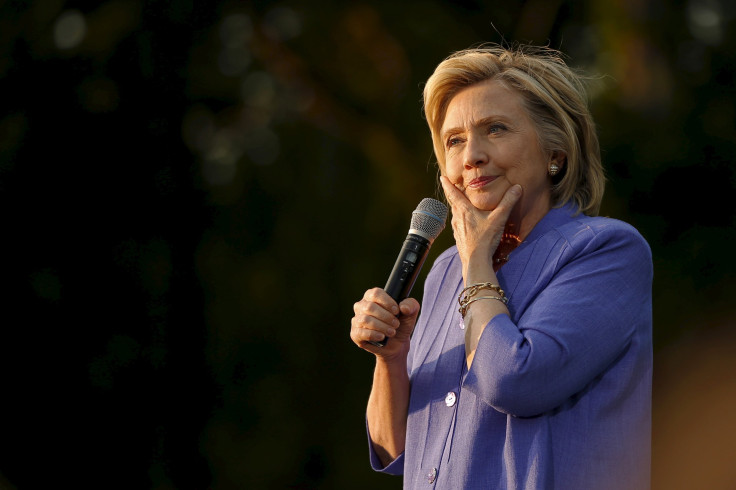Clinton, Bush Get Testy On Twitter Over Student Loan Policies And College Affordability

Less than a day after unveiling an ambitious plan to overhaul college affordability in the United States, former Secretary of State and Democratic front-runner Hillary Clinton was looking to bolster her argument on Twitter. Then, former Florida Gov. Jeb Bush, a Republican presidential hopeful, took a swing at her message using the same forum.
After Clinton posted a graphic pointing out the $1.2 trillion in college loan debt currently shouldered by American college students and former students, Bush wanted Twitter to know college loan debt has risen during President Barack Obama's presidency. The two politicians then engaged in a somewhat vicious back and forth using graphics to further their points.
After Clinton shot back with a graphic of her own that brought Bush's Florida colleges record into question, the former governor shot back with a redesigned version of Clinton's campaign logo. The red arrow was facing up. The message wasn't clear on the subject of college affordability, but it was more provocative.
Cost won't be a barrier to an education. Debt won't hold you back. Read Hillary's plan: http://t.co/A4pWb3fOf4 pic.twitter.com/KVyr8SlSVn
— Hillary Clinton (@HillaryClinton) August 10, 2015@HillaryClinton pic.twitter.com/m6LAHYCLok
— Jeb Bush (@JebBush) August 10, 2015.@JebBush Fixed it for you. pic.twitter.com/d4q9EWpXCA
— Hillary Clinton (@HillaryClinton) August 10, 2015.@HillaryClinton fixed your logo for you. pic.twitter.com/141nXHQe4Z
— Jeb Bush (@JebBush) August 11, 2015Clinton announced Monday a $350 billion, 10-year plan to lower the cost of attending college in the United States. She told voters in New Hampshire during the rollout that "costs won't be a barrier" to a student attending college if she becomes president. She joins two other Democratic presidential hopefuls in calling for college tuition to be made more affordable.
"College is supposed to help people achieve their dreams, but more and more, paying for college actually pushes those dreams further and further out of reach," Clinton said. "That is a betrayal of everything college is supposed to represent."
She would achieve the lowered financial burden, she said, by issuing more low-interest grants and loans through the federal government. The federal government wouldn't make money off student loans if she were president, she said.
© Copyright IBTimes 2025. All rights reserved.






















